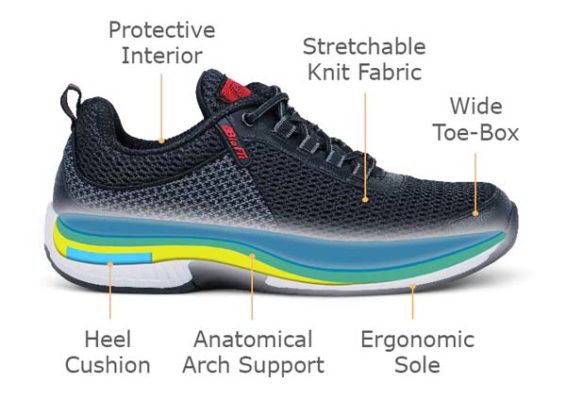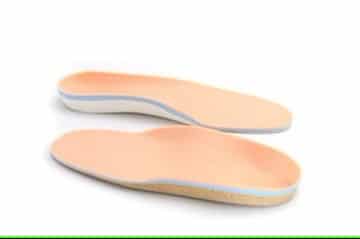What is the lifespan of an insole?
Understanding the lifespan of your shoe insoles is crucial for maintaining optimal foot health. This article delves into the factors that affect how long shoe insoles last, the signs that it’s time for a replacement, how often you should replace them, and how to extend their longevity.
| Topic | Key Points |
|---|---|
| Lifespan Factors | Material, Usage, Shoe Type |
| Replacement Signs | Wear and Tear, Reduced Comfort, Foot Issues |
| Replacement Timeline | General Guidelines, Special Consideration for DT Footwear Customers |
| Extending Longevity | Proper Care, Rotating Insoles, Quality Material |
Let’s kick off by discussing the various factors that determine the lifespan of a shoe insole.
Factors Affecting the Lifespan of Shoe Insoles
Material Matters
The material of the insole plays a significant role in its durability. For instance, gel insoles tend to last longer than foam ones. Leather insoles offer a balance between comfort and longevity.
Usage Patterns
How often you use the insoles and for what activities significantly impact their lifespan. Athletic shoes for active individuals may wear out faster due to high-impact activities like running, jumping or quick later movement such as that in tennis or pickleball. These activities exert more force on the insole, causing it to degrade more quickly.
On the other hand, insoles used in low-impact activities such as short walks or casual use around the house tend to last longer. The reduced stress and force on the insole contribute to a slower rate of wear and tear, extending its lifespan. Therefore, understanding your usage patterns can help you better gauge when it’s time for a replacement.

Shoe Type
The type of shoe in which the insole is placed can significantly affect its lifespan for several reasons:
- Foot Movement: As mentioned, less dynamic foot movement will lead to slower wear and tear on the insole. Just like the tires on a race car tires will wear out faster than a daily driver in stop and go traffic.
- Shoe Construction: The overall construction of the shoe also plays a role. For example, shoes designed for stability or motion control may reduce the stress on the insole, extending its life.
- Material Compatibility: The material of the shoe itself can affect the insole’s lifespan. Leather shoes often provide a more stable environment for insoles compared to synthetic materials, which may degrade the insole more quickly.
- Ventilation: Shoes with better ventilation can help keep insoles dry, thereby extending their lifespan. This is particularly important for insoles used in wide athletic shoes that are exposed to sweat and moisture.
- Insole Pocket: Some shoes are designed with a extra-depth for the insole (like the Orthofeet Edgewater), which can provide more protection and reduce the rate of wear and tear. Additional, these extra-depth shoes can accomodate custome orthotic insoles that provide superior protection and longevity. More about this later on the in the article.
Understanding the type of shoe you’re using can help you make more informed decisions about when to replace your insoles and how to extend their life.
- Material
- Usage
- Shoe Type
In summary, the material, usage, and type of shoe all contribute to how long a shoe insole will last. The construction, material compatibility, ventilation, and design of the shoe’s insole pocket are all factors that can either extend or shorten the lifespan of your insoles. Next, let’s look at the signs that indicate it’s time for a replacement.

Custom Inserts: A Step Above in Quality and Longevity
Custom inserts, often created from a foam box impression of your foot, offer a level of quality and durability that is generally higher than off-the-shelf options. These inserts are tailored to the unique contours and pressure points of your feet, providing unparalleled support and comfort.
Because they are custom-made, these inserts are often constructed from high-quality materials that are designed to last. The precise fit also means that there is less friction and movement inside the shoe, which can extend the lifespan of the insert. Brands like Apis, Propet, and Orthofeet offer custom insert options that are known for their durability and support.
Note on Thickness and Shoe Compatibility: Custom inserts are generally thicker than conventional insoles. Therefore, they require shoes with a deep foot box to accommodate the added thickness. Make sure to consider this when selecting your footwear.
In summary, custom inserts offer a higher level of quality and durability due to their custom fit and high-quality materials. They are an excellent option for those looking to extend the lifespan of their insoles while enjoying superior comfort and support, provided they are paired with shoes that can accommodate their thickness.
Signs It’s Time to Replace Your Insoles
Visible Wear and Tear
If the insole shows signs of flattening, cracking, or fraying, it’s a clear indicator that it needs to be replaced.
Reduced Comfort and Support
When you start to feel less support and increased discomfort, especially in areas like the arch or heel, it’s time to consider a new insole.
Emerging Foot Issues
If you notice the onset of foot problems like blisters or bunions, it could be due to worn-out insoles that no longer provide adequate support.
In a nutshell, visible wear and tear, reduced comfort, and emerging foot issues are signs that your insoles need replacement. Now, let’s discuss the ideal replacement timeline for your insoles.
The Ideal Replacement Timeline for Shoe Insoles
Standard Replacement Guidelines
As a general rule of thumb, shoe insoles should be replaced every 6 to 12 months. However, this can vary based on the factors we’ve discussed earlier, such as material and usage.
Special Consideration for DT Footwear Customers
For customers of DT Footwear, we offer a unique advantage. Many of the shoes we sell come with three free inserts, valued at $240. This allows you to replace your insoles every 4 months, providing you with a year’s worth of optimal foot support and comfort.
Why Every 4 Months?
Replacing your insoles every 4 months ensures that you consistently benefit from maximum support, comfort, and hygiene. It also minimizes the risk of foot issues such as blisters, bunions, and discomfort.
To recap, while the general guideline is to replace insoles every 6 to 12 months, DT Footwear customers have the luxury of a 4-month replacement cycle, thanks to the three free inserts provided with many of our shoes.
Extending the Longevity of Your Shoe Insoles
Proper Care and Maintenance
Regular cleaning and airing out your insoles can go a long way in extending their lifespan. This is especially important for insoles used in shoes that are exposed to sweat and moisture. Think works boots or athletic court shoes.
Rotating Insoles
If you have multiple pairs of shoes, consider rotating your insoles. This gives them time to regain their original shape, reducing the wear and tear.
Quality Over Quantity
Investing in high-quality insoles made from durable materials can actually save you money in the long run. Brands like Apis, Propet, and Orthofeet are known for their durable and supportive insoles.
To sum up, proper care, rotation, and investing in quality brands can significantly extend the life of your shoe insoles. With these tips in mind, you’re well-equipped to make informed decisions about your insoles.
Conclusion
Understanding the lifespan of your shoe insoles is more than just a matter of economics; it’s a step towards better foot health. By paying attention to the material, usage patterns, and signs of wear, you can ensure that your insoles provide the support and comfort your feet deserve. And remember, if you’re a DT Footwear customer, take advantage of our offer of three free inserts to keep your feet happy and healthy all year long.
Take the Next Step for Happy Feet
If you still have questions or need personalized advice, don’t hesitate to contact our Fitment Specialist. Your journey to happy, healthy feet starts with the right information and the right insoles.
